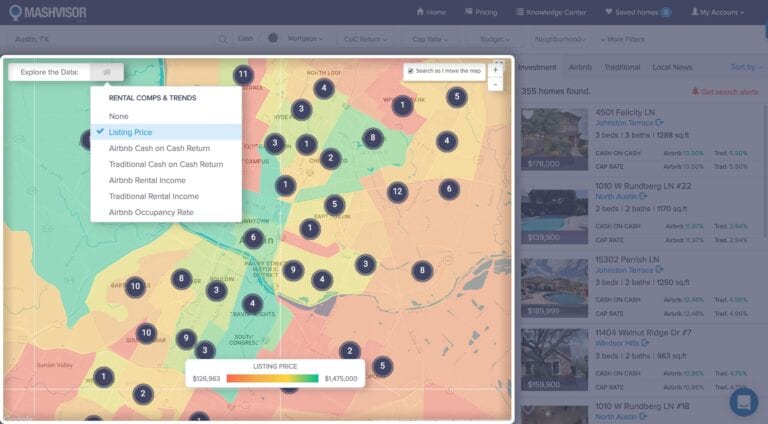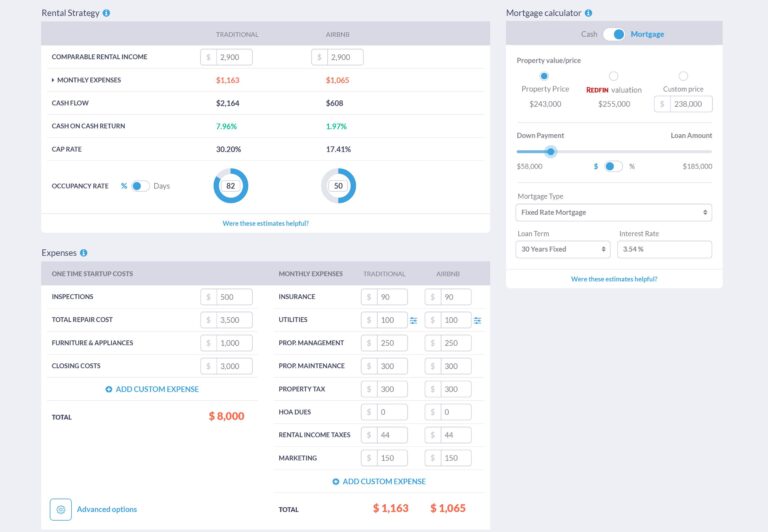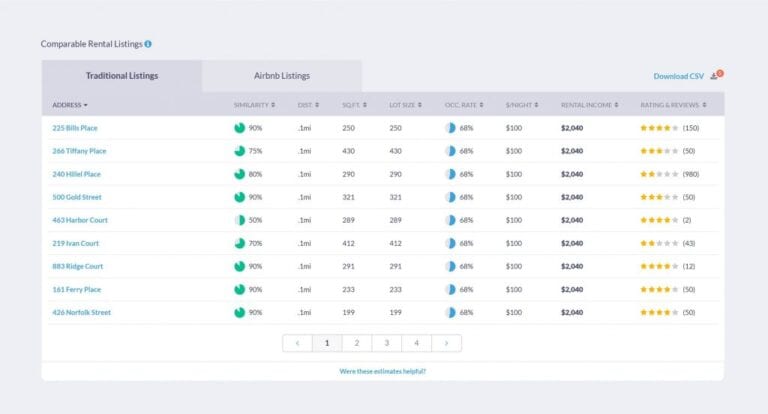Real estate investing has a lot of benefits including cash flow, appreciation, tax advantages, and leverage. Although it can be a lucrative investment strategy, not all investment properties will generate good returns. For you to figure out if an investment property for sale has the potential for making money, you should know how to analyze it. In order to find cash flow properties with a high return on investment, you need to master the art of conducting property analysis. Through, property analysis, you will know whether moving forward with a real estate deal is a smart move.
However, with so many factors to take into consideration, real estate property analysis can be intimidating, especially to a beginner. Even so, you don’t have to be experienced in real estate or be a master of numbers to be able to analyze an investment property. With a systematic approach and the right tools, anyone can do it.
So, how do you establish whether a particular investment property for sale will generate high returns? Here is a simple step-by-step guide to property analysis:
1. Research the Rental Market
Before you buy an investment property, it’s crucial that you understand the market in which it is located. This is because location plays a key role in determining the performance of an investment property. Location will impact property prices, rental rates, rental expenses, the tenants you attract, and the appreciation of your property. Therefore, if you want a good return on investment, your property analysis should begin with analyzing the location to ensure it is a good real estate market.
Here are some of the features of top rental markets to watch out for:
- Population growth
- Economic growth
- Growing job market
- Good price-to-rent ratio
- Low insurance costs
- Low property taxes
You can also conduct real estate market analysis by checking city data and insights on Mashvisor’s blog. This includes median property price, average rental income, cap rate, cash on cash return, Airbnb occupancy rate, and more.
What if you find that the investment property is located in a bad housing market? Then move on. Take your time to research different housing markets. You shouldn’t limit yourself to only the markets near you. Your backyard may not always be the best choice.
Related: How to Identify the Best Places to Invest in Real Estate
2. Conduct a Neighborhood Analysis
If you have confirmed that the investment property for sale is located in a profitable market, the next step in your property analysis is to narrow down your research to a micro-level. In other words, you should ensure that the neighborhood offers the best rental investment opportunities in your city of choice. After all, the rental income potential of rental properties in different neighborhoods within a city often varies. You need to do a neighborhood analysis to confirm that you are investing in one of the best performing neighborhoods in the city.
Here are some of the features of a good neighborhood for real estate investing:
- Low crime rate
- Proximity to amenities like schools, hospitals, restaurants, etc.
- Access to public transportation
- Favorable local laws
- Walkability
You will also want to check on the average return on investment in the neighborhood. The easiest way to conduct this part of the neighborhood analysis is to use Mashvisor’s Real Estate Heatmap. It’s a very simple tool to use. You simply type in your city of choice, select a filter, and the map will highlight the performance of the neighborhoods in the city using different colors. You can use different filters to locate neighborhoods that rank high based on metrics such as listing price, rental income, cash on cash return, and Airbnb occupancy rate. In this way, you can see how the neighborhood of your choice performs and compare it to other neighborhoods in the city.
After comparing the neighborhood to others in the city, you can also get a full analysis of it on Mashvisor. Visit your neighborhood’s Analysis Page to get stats on comps and more. Check out this Neighborhood Analysis.
Related: Finding Income Properties Using a Heatmap
3. Calculate Key Real Estate Metrics
After analyzing the location at the neighborhood level, the next step is analyzing the rental property. This is a very important part of your rental property analysis. It involves collecting property data and doing calculations to know whether purchasing the investment property makes financial sense.
Here are the key numbers you need to calculate in your investment property analysis:
-
Cash Flow
The first thing that savvy real estate investors calculate when evaluating real estate is cash flow. Cash flow is the amount of money left after deducting rental expenses from rental income. To make money in real estate, make sure you are buying a rental property with positive cash flow. Cash flow analysis will ensure that you only invest in properties that will reap extra income monthly and that you won’t have to use money from your own pocket to offset some rental expenses.
-
Cap Rate
Cap rate refers to the potential rate of return on an investment property assuming that it was purchased in cash. It is calculated by dividing the net operating income (NOI) of the property by its purchase price or market value. Since the method of financing is not taken into account, it’s usually used for comparing multiple similar investment properties for sale in a particular area. While what is considered a good cap rate may vary based on factors such as location and property type, generally speaking, most real estate investors aim for a high cap rate property, typically between 8-12%.
-
Cash on Cash Return
If you will be financing the property with a mortgage loan, cash on cash return is a key metric in your property analysis. It is the ratio of the annual pre-tax cash flow (NOI – annual mortgage payment) to the total cash investment (down payment, closing costs, any rehab costs, and other loan fees).
Each of these metrics is important in real estate property analysis because it shows you something about the profitability of the rental property. Therefore, it’s important for an investor to calculate all of them during property analysis rather than relying on only one of them to make an investment decision.
Using the Investment Property Analysis Calculator
While you can run the above numbers on your own using a rental property analysis spreadsheet, it can be time-consuming and tedious. Furthermore, spreadsheets are prone to errors. The most efficient and accurate way to find property data and calculate key metrics is to use Mashvisor’s property analysis calculator. This tool uses predictive analytics and machine-learning algorithms to provide users with readily calculated property metrics. It allows you to do your property analysis in a matter of minutes from the comfort of your phone or computer.
The metrics are provided for both Airbnb and traditional rental strategies. Therefore, it’s easier to know the optimal rental strategy for the property you are analyzing. If you are interested in Airbnb rentals, Mashvisor’s Airbnb calculator is the best tool for Airbnb investment analysis.
4. Run a Comparative Market Analysis
After running the numbers, you will be able to know whether the investment property has good potential for profit or not. However, you shouldn’t be quick to make an offer just yet. The final step in the property analysis process is finding the fair market value of the property through comparative market analysis. This involves comparing the property with other similar rental properties that were recently sold in the area (real estate comps).
When done properly, CMA will help you with the following:
- Knowing the right offer to make and prevent you from overpaying for the property. If the listing price is below market value, that would be an even better deal.
- Estimating the right rental rate for the property when you buy it.
- Understanding the overall performance of the housing market.
While your local agent can help you find sales and rental comps, you can do it effortlessly using Mashvisor. Mashvisor allows you to access a list of comps for each listing on the platform with the click of a button. If the math looks good, you can go ahead and make an offer.
Related: How to Do Comparative Market Analysis Step by Step
The Bottom Line
Property analysis is one of the key skills you want to develop before you buy an investment property. Through proper analysis of an investment property, you’ll be able to know whether buying it makes financial sense. If you are looking to buy an investment property soon, be sure to follow this property analysis guide.
Remember, our property analysis software allows you to find top locations and profitable investment properties in the US housing market in a matter of minutes. With Mashvisor, you’ll be able to make your investment decisions with confidence and prevent losses.
To start your 7-day free trial with Mashvisor and subscribe to our services with a 20% discount after, click here.


